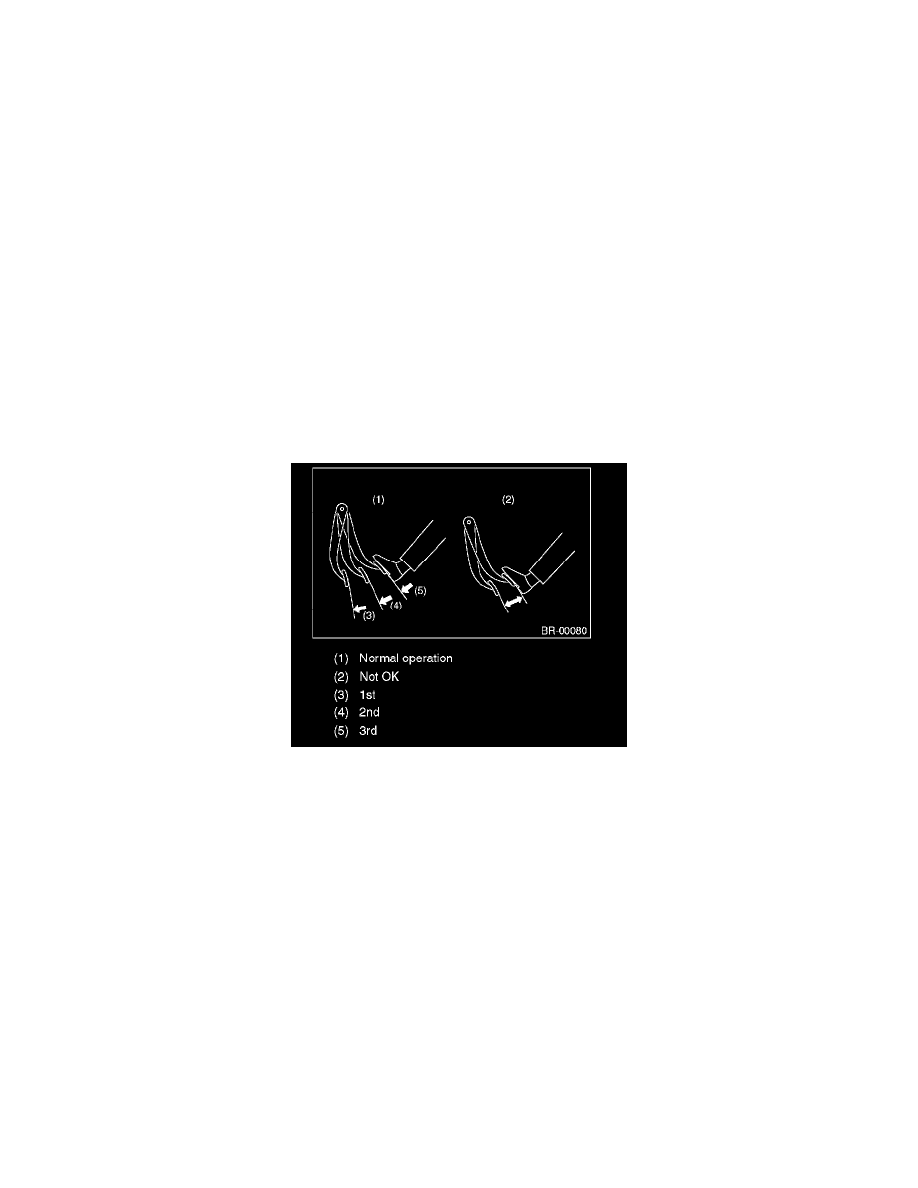Impreza WRX STI F4-2.5L Turbo (2008)

Vacuum Brake Booster: Testing and Inspection
Brake Booster
INSPECTION
NOTE: If the vehicle is equipped with a brake assist mechanism, the following may result when the brake pedal is depressed. They are normal
conditions that occur when the mechanism is performing properly.
^
Brake feel is soft when brake pedal is depressed hard or quicker than usual.
^
A light crack is heard when brake pedal is depressed hard or quicker than usual.
OPERATION CHECK (WITHOUT GAUGES)
CAUTION: When checking operation, be sure to apply the parking brake securely.
^
CHECK WITHOUT GAUGES
This method can not determine exactly what part is defective. But it is possible to identify the outline of the defect by performing the check according
to the following procedures.
^
AIR TIGHTNESS CHECK
Start the engine, and idle it for 1 to 2 minutes, then turn it OFF. Depress the brake pedal several times applying the normal pedal force. The pedal
stroke should be the longest at the 1st depression, and it should become shorter at each successive depression. If no change occurs in the pedal height
when pressed, the brake booster is faulty.
NOTE:
^
In case of defective operation, inspect the condition of the check valve and vacuum hose as well.
^
Replace them if faulty, and perform the test again.
^
If no improvement is observed, check precisely with gauges.
^
OPERATION CHECK
1) While the engine is OFF, depress the brake pedal several times applying the same pedal force, to check for a change in pedal height.
